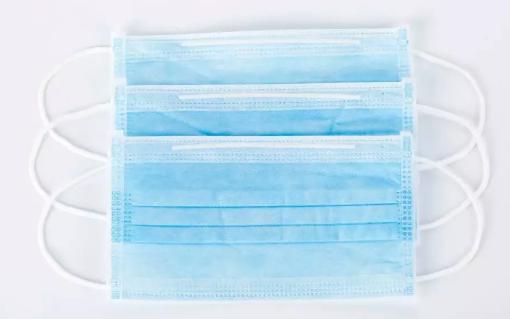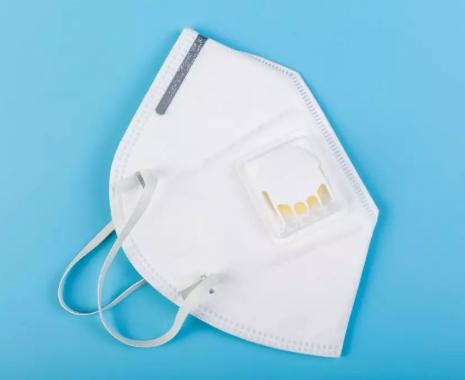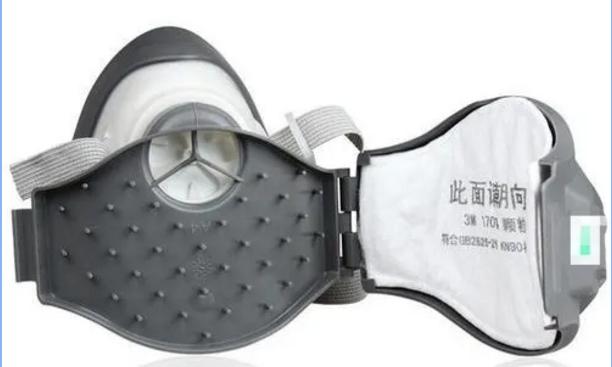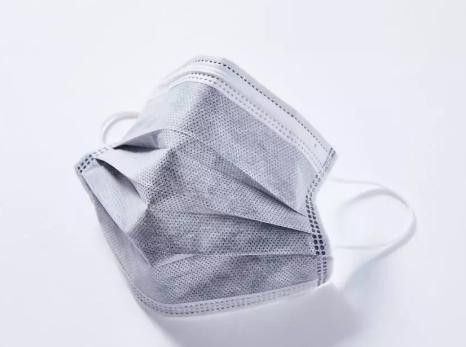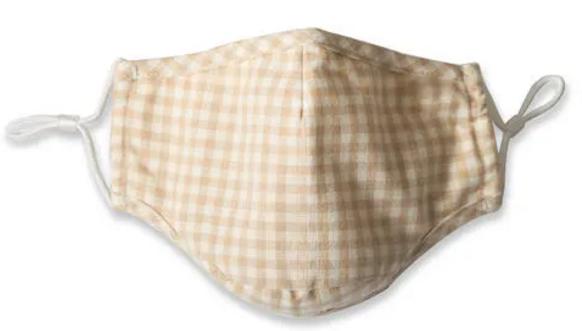Comprehensive understanding! Comparison and interpretation of mask standards.
In the face of the COVID-19 epidemic,
you must do a good job of self-protection and
wear a mask! Wear a mask! Wear a mask!
Important things should be said three times...
So, do we have a correct understanding of masks?
Here are some important knowledge about masks for everyone
1. Definition and classification of masks
Masks are used to filter the air entering the mouth and nose in order to block harmful gases, odors, and droplets from entering and exiting the wearer's mouth and nose. They are made of non-woven fabrics, etc. They
are generally divided into three categories: medical masks, industrial protective masks, and civilian masks. There are many differences in their application scenarios, main features, implementation standards, and manufacturing processes.
At this stage, domestic medical masks are managed as medical devices.
Medical mask products are generally made of three layers of non-woven fabrics, of which the outer layer is spunbond non-woven fabric, which is waterproof and adopts an anti-droplet design to block body fluids, blood and other liquids; the middle layer is meltblown non-woven fabric, usually made of polypropylene meltblown non-woven fabric that has been electret treated, as the core of the filter layer; the inner layer mainly uses ES non-woven fabric, which has good moisture absorption function.
2. Mask classification and product features
01
Medical masks
Disposable medical masks
Application scenarios
General medical environment
Main features
◎ No excessive requirements for tightness and blood barrier
◎ Commonly used are ear strap and tie-on types, similar in appearance to medical surgical masks
Medical surgical masks
Application scenarios
: Invasive procedures performed by clinical medical staff.
Main features
: ◎ Can block blood, body fluids, and some particles.
◎ Commonly used are ear strap and lace-up types.
Medical protective masks
Application scenarios
◎ Suitable for medical working environment
◎ Filter particulate matter in the air, block droplets, etc., and protect against airborne respiratory infectious diseasesMain
features
◎ Can filter particulate matter in the air, block droplets, blood, body fluids, secretions and other pollutants
◎ It is a close-fitting self-priming filter type medical protective disposable product
◎ Common medical protective masks are arched and folded02
Industrial
protective masks
Application scenarios
Generally used in special industrial places, such as painting, cement production, sand blowing, steel processing, etc., where there are a lot of dust, iron filings and other fine particles in the work environment.
Special types of work are required by the state to be used by employers.
Main features of masks
◎ Can effectively protect against inhalation of fine particles such as dust
◎ According to the filtering performance, it is divided into KN type and KP type.
KN type is only suitable for filtering non-oily particles.
KP type is suitable for filtering oily particles.
03
Civilian masks
Daily protective masks
Application scenarios
Filter out particles in air pollution environments in daily life
Main features
Good filtering performance
Cotton mask
Application scenarios
Mainly used for warmth or decoration
Main features
◎Good air permeability
◎Only can filter larger particles, basically no dust and bacteria prevention effect
III. Mask testing standards
01
Basic standards
Ordinary mask microbial indicators
|
Initial contamination bacteria
cfu/g
|
—
|
|
Total bacterial colony count
cfu/g or cfu/mL
|
≤200
|
|
Escherichia coli
|
Not to be detected
|
|
Pathogenic pyogenic bacteria
|
Not to be detected
|
|
Total fungal colony count
cfu/g or cfu/mL
|
≤100
|
Disinfection-grade masks•Microbiological indicators
|
Initial contamination bacteria
cfu/g
|
≤10000
|
|
细菌菌落总数
cfu/g或cfu/mL
|
≤20
|
|
大肠杆菌
|
不得检出
|
|
致病性化脓菌
|
不得检出
|
|
真菌菌落总数
cfu/g或cfu/mL
|
不得检出
|
All disposable masks must meet the requirements of GB15979-2002 "Standards for Disposable Sanitary Products".
02
Product Standards
Medical Masks
Disposable Medical Masks
Implementation Standards
YY/T0969-2013 "Disposable Medical Masks"
Inspection Items
Appearance, structure and size, nose clip, mask strap, bacterial filtration efficiency (BFE), ventilation resistance, microbial indicators, ethylene oxide residue, cytotoxicity, skin irritation, delayed hypersensitivity reaction
Important indicators
◎ Bacterial filtration efficiency:
Mask bacterial filtration efficiency: not less than 95%
◎ Ventilation resistance:
The ventilation resistance for gas exchange on both sides of the mask should not exceed 49Pa/cm2
◎ Microorganisms:
Total bacterial colony count: ≤100 CFU/g.
Escherichia coli, Pseudomonas aeruginosa, Staphylococcus aureus, hemolytic streptococci, and fungi shall not be detected.
◎ Ethylene oxide residue:
If the mask is sterilized or disinfected with ethylene oxide, the ethylene oxide residue should not exceed 10μg/g.
Medical surgical masks
implement the standard
YY0469-2011 "Medical surgical masks"
inspection items
: appearance, structure and size, nose clip, mask strap, synthetic blood penetration, filtration efficiency (bacteria, particles), pressure difference, flame retardant performance, microorganisms, ethylene oxide residue, cytotoxicity, skin irritation, delayed hypersensitivity reaction.
Important indicators
◎Filtration efficiency:
Bacterial filtration efficiency (BFE): not less than 95%
Particle filtration efficiency (PFE): The filtration efficiency for non-oily particles should be not less than 30%
◎Synthetic blood penetration:
Spray 2mL of synthetic blood to the outside of the mask at a pressure of 16.0kPa (120mmHg), and no penetration should occur on the inside of the mask
◎Pressure difference:
The pressure difference between the two sides of the mask for gas exchange should be no more than 49Pa
◎Microorganisms:
Total bacterial colony count: ≤100CFU/g.
Escherichia coli, Pseudomonas aeruginosa, Staphylococcus aureus, hemolytic streptococci, and fungi shall not be detected.
◎Ethylene oxide residue:
If the mask is sterilized or disinfected with ethylene oxide, the ethylene oxide residue shall not exceed 10μg/g.
Implementation standard of
medical protective masks
GB19083-2010 "Technical requirements for medical protective masks"
Inspection items
Basic requirements for masks (appearance), nose clip, mask strap, filtration efficiency, airflow resistance, synthetic blood penetration, surface moisture resistance, microorganisms, ethylene oxide residue, flame retardant performance, tightness, skin irritation
Important indicators
◎Filtration efficiency:
Level 1 ≥95%;
Level 2 ≥99%;
Level 3 ≥99.97%;
◎Airflow resistance:
When the gas flow rate is 85L/min, the inhalation resistance of the mask shall not exceed 343.2Pa (35mmH2O)
◎Synthetic blood penetration:
Spray 2mL of synthetic blood at a pressure of 10.7kPa (80mmHg) onto the mask, and no penetration should occur on the inside of the mask.
◎ Microorganisms:
Total bacterial colony count: ≤200CFU/g
Total fungal colony count: ≤100CFU/g
Escherichia coli, Pseudomonas aeruginosa, Staphylococcus aureus, and hemolytic streptococci must not be detected.
◎ Ethylene oxide residue:
If the mask is sterilized or disinfected with ethylene oxide, the ethylene oxide residue should not exceed 10μg/g.
◎ Flame retardant performance:
The material used should not be flammable
and the afterburning time should not exceed 5s.
Industrial protective masks
implement the standard
GB2626-2006 "Self-priming filter-type anti-particulate respirator for respiratory protective equipment"
Inspection items
Appearance, filtration efficiency, exhalation valve, breathing resistance, dead space, field of view, headband, connection and connection parts, flammability, marking, leakage, lens, airtightness
Important indicators
◎ Filtration efficiency:
KN filter element (non-oily particulate matter):
KN90 ≥ 90.0%;
KN95≥95.0%;
KN100≥99.97%;
KP filter element (oily particles):
KP90≥90.0%;
KP95≥95.0%;
KP100≥99.97%;
◎Respiratory resistance:
The total inhalation resistance of each sample should not be greater than 350Pa.
The total exhalation resistance of each sample should not be greater than 250Pa.
Civilian masks.
Daily protective masks
implement the standard
GB/T32610-2016 "Technical Specifications for Daily Protective Masks".
Inspection
items: Appearance, color fastness to friction (dry/wet), formaldehyde content, pH value, decomposable carcinogenic aromatic amine dyes, ethylene oxide residue, inhalation resistance, exhalation resistance, breaking strength of the mask strap and the connection between the mask strap and the mask body, exhalation valve cover fastness, microorganisms, filtration efficiency, protective effect, and field of view below the mask.
Important indicators:
◎ Inhalation resistance ≤175Pa
◎ Exhalation resistance ≤145Pa
◎ Salt medium filtration efficiency:
Level Ⅰ ≥99%, Level Ⅱ ≥95%, III ≥90%
◎ Oily medium filtration efficiency:
Level Ⅰ ≥99%, Level Ⅱ ≥95%, III ≥90%
◎ Protective effect:
Grade A: Filtration efficiency above Grade II
Grade B, C, D: Filtration efficiency above Grade III
◎Microbiological indicators:
Total fungal colony count ≤100CFU/g Total
bacterial colony count ≤200CFU/g
Coliform group and pathogenic pyogenic bacteria (Pseudomonas aeruginosa, Staphylococcus aureus, hemolytic streptococci) shall not be detected
◎ Ethylene oxide residue:
If the mask is sterilized or disinfected with ethylene oxide, the ethylene oxide residue should not exceed 10μg/g
Cotton mask
Implementation standard
FZ/T73049-2014 "Knitted Mask"
Inspection items
pH value, formaldehyde content, logo, odor, decomposable carcinogenic aromatic amine dyes, fiber composition, color fastness (resistance to soap washing, water, saliva, friction, sweat stains), air permeability, appearance quality + specifications and dimensions
Important indicators
◎ Air permeability ≥ 250mm/s
Mask related questions and answers
1. What is filtration efficiency?
The ability of the mask body to filter out particulate matter is expressed as a percentage.
The higher the percentage value, the better the filtration performance and the higher the protection effect.
Summary of [filtration efficiency] of various mask standards:
|
standard name
|
Filtration efficiency requirements
|
|
GB19083-2010 Technical Requirements for Medical Protective Masks
|
Non-oily particle filtration efficiency:
Level 1 ≥ 95%;
Level 2 ≥ 99%;
Level 3 ≥ 99.97%;
|
|
GB2626-2019 "Respiratory protective equipment self-priming filter type anti-particulate respirator"
|
Non-oily particle filtration efficiency:
KN90 ≥ 90.0%;
KN95 ≥ 95.0%;
KN100 ≥ 99.97%;
Oily particle filtration efficiency:
KP90 ≥ 90.0%;
KP95 ≥ 95.0%;
KP100 ≥ 99.97%;
|
|
GB/T32610-2016 Technical Specifications for Daily Protective Masks
|
非油性颗粒物过滤效率:
Ⅲ≥90%;
Ⅱ级≥95%;
Ⅰ级≥99%;
油性颗粒物过滤效率:
Ⅲ≥90%;
Ⅱ级≥95%;
Ⅰ级≥99%;
|
|
YY0469-2011《医用外科口罩》
|
细菌过滤效率(BFE):≥95%
非油性颗粒物过滤效率(PFE):≥30%
|
|
YY/T0969-2013《一次性使用医用口罩》
|
细菌过滤效率(BFE):≥95%
|
2. Regarding this epidemic, why is the aerosol barrier effect of particle protection masks better than that of medical surgical masks and medical disposable masks?
The relatively clear transmission routes of the new coronavirus are: direct transmission, aerosol transmission, and contact transmission. Wearing a mask is the most effective way to block aerosol transmission. So what type of mask has a better barrier effect on aerosol particles?
From the perspective of standard requirements, GB19083-2010 "Technical Requirements for Medical Protective Masks", GB2626-2019 "Self-priming Filter-type Anti-particle Respirator for Respiratory Protection Equipment", and GB/T32610-2016 "Technical Specifications for Daily Protective Masks" all require "non-oily particle filtration efficiency" to be above 90%, which is significantly higher than YY0469-2011 "Medical Surgical Masks" (≥30%) and YY/T0969-2013 "Disposable Medical Masks" (particulate filtration efficiency is not assessed).
From the perspective of the filter layer structure, the microstructure of the filter layer of N95/KN95 masks is obviously denser than that of medical surgical masks and medical disposable masks, and has a better barrier effect.
The microscopic image of the filter layer magnified 200 times is as follows:
N95 mask
medical surgical
medical disposable
3. Why should the ethylene oxide residue be detected?
Some masks are sterilized or disinfected during production. Ethylene oxide has a bactericidal effect and is often used in industry to make bactericides and disinfectants. At the same time, ethylene oxide is a toxic carcinogen. If the mask is sterilized or disinfected with ethylene oxide, there may be a certain amount of residue. Therefore, the standard stipulates that the ethylene oxide residue of masks sterilized or disinfected with ethylene oxide shall not be 10μg/g.
Note:
1μg (microgram) = 0.0000001g (gram) (one millionth of a gram)
4. Are the quality requirements for medical masks necessarily stricter than those for industrial protective masks and civilian protective masks?
Not necessarily.
The three types of masks are used in different environments and wearers, so the assessment items and index requirements of the quality standards also have different focuses and cannot be simply generalized.
For example, "synthetic blood penetration" is a key quality indicator for medical protective masks (GB19083-2010 "Technical Requirements for Medical Protective Masks") and medical surgical masks (YY0469-2011 "Medical Surgical Masks"). However, civilian protective masks and industrial protective masks (GB2626-2019 "Respiratory Protection Equipment Self-priming Filter Anti-particle Respirator") do not need to be assessed.
"Particle filtration efficiency" is a key quality indicator for industrial protective masks and civilian protective masks (GB2626-2019 "Self-priming filter-type anti-particle respirator for respiratory protective equipment", GB/T32610-2016 "Technical specifications for daily protective masks"), and the requirements are stricter than those for medical surgical and medical disposable masks (YY0469-2011 "Medical surgical masks", YY/T0969-2013 "Disposable medical masks").
5. How to wear masks reasonably and scientifically as needed?
◎ The following scenarios use particle protection masks of N95/KN95 and above standards:
High-risk exposed personnel: staff on the front line of fighting the epidemic, etc.
Higher-risk exposed personnel: medical staff working in the emergency department, public health physicians conducting epidemiological surveys on close contacts, and environmental and biological sample testers related to the epidemic.
◎ Medical surgical masks are used in the following scenarios:
People with medium-risk exposure: medical staff working in general outpatient clinics/wards, staff in crowded places, people engaged in epidemic-related administrative management, police, security, express delivery, etc., people in home isolation and living with them.
◎ Medical disposable masks are used in the following scenarios:
People with lower risk exposure: the public in crowded areas such as supermarkets, transportation, elevators, indoor office environments, patients visiting medical institutions (except fever clinics), children in kindergartens and students in schools who study and participate in activities together, etc.
You don't need to wear a mask at home and in well-ventilated places with low crowd density.


